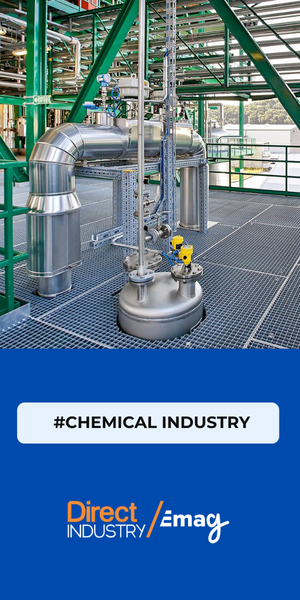Yesterday, at the press conference launching the Global Industrie trade show, set to take place in Paris Villepinte next March, the message was clear: focus on the positives. Despite a challenging economic climate, organizers and industrial players share a common ambition: to restore industrial strength in France and across Europe, mobilizing all stakeholders around this critical mission of industrial reconquest.
The question at the heart of the debate is as complex as it is urgent: how can European industry regain competitiveness? Global Industrie, returning in 2026, continues to examine this question against a backdrop of factory closures and slow industrial revival.
As Sébastien Gillet, president of GL Events, organizer of the fair, observed,
“We just wanted to focus on the positives. Factories will close, that’s inevitable, but our industry is vibrant. If we highlight the successes of French industry, like Bpifrance regularly does, we can show that we are not at the beginning of the tunnel anymore.”
Global Industrie 2026: France’s Path to Reindustrialization
According to Nicolas Dufourcq, CEO of Bpifrance, the tools to support industrial transformation of the French ecosystem are already in place.
“Behind the €35 billion mobilized through Bpifrance’s Industry Plan, there is a real toolbox.”
The program currently reaches 55% of French industrial SMEs, with a target of 70% in the coming years. Through financing, innovation support, equity, grants, repayable loans, and advisory programs including accelerators, nearly 900 companies benefit from intensive industrial training annually, 600 of them in manufacturing.
Read our company profiles of French startups
Yet challenges remain. While industrial start-ups are emerging rapidly—around 350 deep-tech start-ups are launched from French universities each year—scaling their operations remains a major hurdle.
Dufourcq notes,
“Each industrial start-up needs to raise €200 to €400 million. We don’t yet have this scale in Europe. The Chinese use public money; the Americans have GAFAM investing massively in US deep-tech. In Europe, we have neither GAFAM nor enough public funding.”
Beyond capital, Dufourcq emphasizes the need for a collective momentum to make industrial reconquest visible. Industry enjoys broad public support. According to a GL Events–Ipsos survey, 93% of French citizens believe that a strong economy requires a strong industrial base.
“This consensus should translate into a powerful collective expression,” he adds.
But while waiting for a “Bastille Day of Industry,” how can we showcase French and European industrial strength? Three industry leaders share their on-the-ground insights and ideas for reclaiming this sector, both in France and across Europe.
Read also
Revitalizing French Industry: Rebooting the Ecosystem and Technologies (Siemens)
As France seeks to restore its industrial competitiveness, Doris Birkhofer, CEO of Siemens France, emphasizes that the challenge goes beyond simply financing companies; it also requires rethinking the entire industrial ecosystem.
“Today in France, we see situations where a large group has to halt production due to quality or delivery issues from a Chinese supplier,” she explains. “At the same time, there is a French SME on the verge of bankruptcy because it no longer has clients and is no longer competitive enough, and industrial start-ups trying to establish themselves in France struggle to secure funding.”
For Birkhofer, revitalization relies on three main levers. First, changing purchasing habits. She stresses the importance of sourcing more from French and European companies rather than China or elsewhere. This approach would support all actors in the industrial value chain while securing supply lines.
Second, creating a framework favorable to innovation and entrepreneurship. Industrial policy should foster an environment where companies can invest, grow, and innovate without being hindered by regulatory or financial obstacles.
“Entrepreneurs must be allowed to act.”
Third, fully leveraging available technologies. Innovation and digitalization are at the core of industrial competitiveness. Birkhofer notes that France still lags behind Germany: only 10% of French SMEs are fully digitalized, and robotics adoption is roughly half that of Germany. Yet the potential is immense.
“These new technologies already exist; they are not only for new companies. They can help all businesses improve productivity and competitiveness.”
Concrete examples illustrate this potential. NDAX, a company specializing in cable support systems, automated its order processing using Siemens’ low-code platform Mendix, improving productivity and reducing complaints.
Similarly, artificial intelligence is not limited to large groups: plug-and-play solutions enable SMEs to implement predictive maintenance and reduce downtime by up to 50%. However, to fully benefit, industrial data must be structured—currently, only 20% is usable.
Read also
Revitalizing French and European Industry: Sovereignty and Integrated Value Chains (Eramet)
As France pushes for reindustrialization and Europe seeks strategic capacity, a clear-eyed assessment is necessary, says Christel Bories, CEO of Eramet.
“Over the past two or three years, what we have seen in global markets is extremely worrying,” she warns.
She cites the rising nationalism, the decline of multilateralism, and the growing dominance of power politics in trade.
“Free trade, once taken for granted, is rapidly eroding under geopolitical tensions and the rise of economic blocs bypassing WTO rules.”
Raw Material Pressures
The raw materials sector, crucial for the energy transition and central to Eramet’s business, faces alarming signals.
“Half of African countries have imposed export restrictions on critical metals in just two years. Meanwhile, China anticipated this shift long ago, investing €300 billion over the past 20 years, including €25 billion in the first half of this year alone.”
Today, Beijing controls around 70% of global critical material refining, reaching 100% in some segments. Europe, for example, imports 98% of its permanent magnets from China, essential for automotive and renewable energy industries.
China’s industrial rise has been coupled with rapid technological advancement. Its share of global industrial production rose from 6% in 2000 to 30% today, while Europe and the U.S. fell from a combined 50% to 35%.
“In batteries, they are 20 years ahead; we have lost the war,” Bories admits. “Seventy percent of electric vehicles and 85% of batteries worldwide come from China, and solar technology and production are almost entirely dominated by Beijing.”
Risks for European Industry
The consequences for European industry are clear: repeated supply disruptions, as seen in chip and permanent magnet shortages; declining competitiveness, as Chinese value chains are highly integrated while ours remain fragmented; and dangerous strategic dependencies.
“We have created situations of dependency,” Bories warns. “Additional Chinese restrictions on rare earths further exacerbate these vulnerabilities.”
Read also
Europe’s Market Advantage
But there is good news. Europe’s 450 million consumers represent a major strategic asset.
“People cannot do without Europe. Let’s play this card and demand local content where we lag technologically,” Bories says.
She advocates conditioning market access on local production, ideally through 50/50 joint ventures with technology transfer, a strategy China used to develop its automotive sector.
Friendshoring and Integrated Value Chains
Rebuilding integrated value chains is crucial. Europe’s traditional model, where a single part could cross ten borders before reaching the final vehicle, is no longer viable amid tariffs, logistical hurdles, and geopolitical competition.
“We must bring more production steps back to Europe or forge strong, lasting alliances with friendly countries, friendshoring” Bories stresses;
She emphasizes diplomatic partnerships to avoid dependence on potentially unreliable states. Understanding the full supply chain is also vital:
“Covid and the Ukraine war revealed that many companies didn’t even know their suppliers,” she notes.
Institutional Agility
Finally, European reindustrialization requires faster, more agile institutions. Public systems must match the speed of entrepreneurs to restore efficiency, responsiveness, and competitiveness.
Europe and France still have the means to rebound, but doing so requires asserting strength, rebuilding industrial sovereignty, and abandoning a culture of naïveté.
Read also
Reviving French Industry: Investing in Youth and Innovation (AtmosGear)
At a time of industrial reconquest, Mido Soliman, CEO of AtmosGear, which manufactures electric rollers, highlights an often-overlooked angle: the importance of youth and culture in revitalizing Made in France.
“If you want to redevelop French industry, you have to invest in youth. That’s what China did,” he asserts.
China’s industrial success was not built overnight; it is the result of a 30-year plan, publicly shared with the population to create a collective mission. Soliman stresses the importance of involving young people early through educational programs and industrial initiatives. Hackathons, competitions, and industry-student partnerships are all tools to prepare the next generation of industrial talent.
Improving Industry’s Image: Making Hardware “Cool”
Soliman also draws attention to the poor perception of industry and hardware in France. While hardware is often seen as outdated or unattractive, popular culture can play a key role in inspiring new generations.
“We need to industrialize pop culture, investing in series or films to make the industry appealing,” he explains.
He points out that the fascination for professions like pastry, now trendy with its own stars and TV shows, demonstrates how pop culture can transform the image of a sector and attract talent.
This approach is reflected in Global Industrie, which invited Inoxtag, France’s most popular 23-year-old YouTuber, for the upcoming March edition to engage younger audiences with industrial innovation.
Concrete Solutions for Start-ups
Finally, he also advocates creating factories dedicated to small-series production, a segment currently under-served.
“For large-scale production, there is everyone; for very small runs, there are fab labs, but for the in-between, there is very little.”
These factories would allow start-ups to produce locally in a flexible and competitive manner.
Read also










![Image [Buying Guide] How to Choose the Right Protection Gloves?](/wp-content/uploads/sites/3/Gloves-1-320x213.jpg)